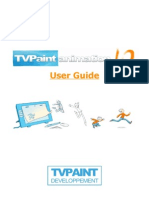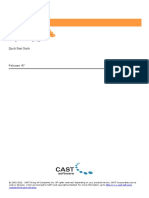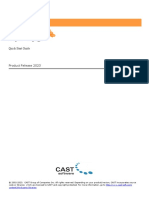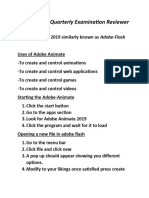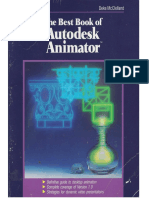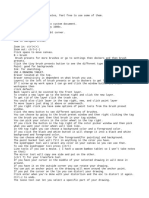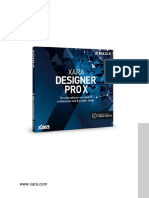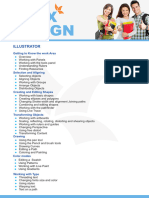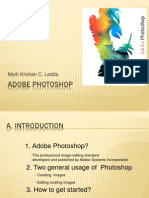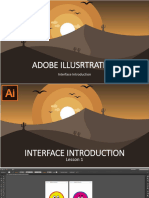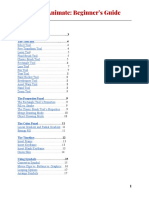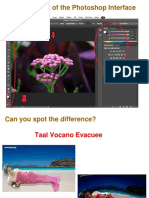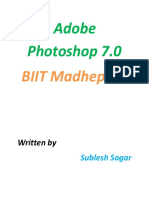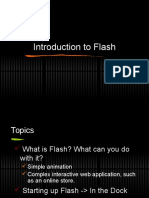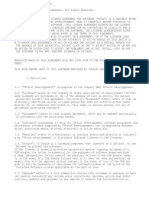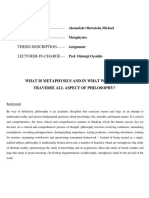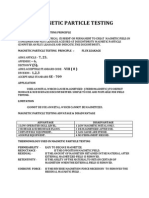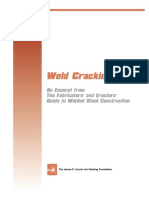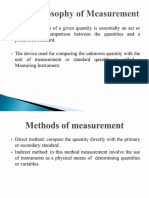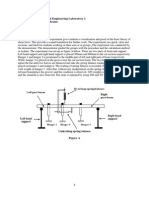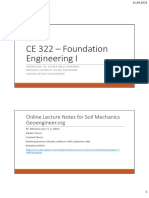Table of Contents
Lesson 00 : Introduction and typographic conventions Lesson 01 : First approach of TVPaint Animation
The various program panels
The Menu panel Main panel Color picker Toolbox Current project window The Timeline The Panel Bin Main menu Info Bar 1111111111111111111111111111111111111112 2 3 3 3 4 4 4 5 6 7 7 7 7 8 8 8 8 9 10 10 10 11 11 11 11 11 12 12 12 15 17 19 19 20 21 21 21 22
Some useful tips
Move a window Close, minimize or maximize a window Sliders and mini-sliders Alphanumeric fields Progress bar
Working with projects
Create a new project View data relative to your project Name a project Working with several projects Working in fullscreen mode Close a project
The Help main menu
InLine support The About... window The Check for Updates option
To quit the program The Preferences panel
The General tab The Display tab The Interface tab The Memory & Cache tab The Sound tab The Startup tab
Some details
Working without the notion of DPI The notion of pixel aspect ratio Video fields
Lesson 02 : Drawing basics
Manage drawing tools
Presentation of the drawing tools Settings the tools Settings of the brush profile Activate Line smoothing 2222222222 2 4 5 6 7 7 7 8
Use colors
R,G,B and H,S,L systems (cursor tab) Picker tab Mixer tab
�Bin tab Color History A Color and B Color Recover a color from the screen The color variation panel
Use filling tools
Filling tools presentation Floodfill's smooth, opacity and anti-aliasing Color gradients Opacity mapping Some remarks for using the Opacity function
Using papers
How to use papers Create and manage your own papers
Selection, crop and transform
The various types of selections Complex selections and brush creation The transformation tools The panning tool The transform tool The warp tool
Further details
Notion of pixel opacity The drawing modes The Re-apply option Drawing tool history Zoom and View options Notion of pixel opacity Rotation of the workspace Flip Horizontally and Vertically The coordinates Use the grid Use the guides The safe area Display settings History panel
22222222222222222222222222222222222-
8 9 9 9 10 10 10 10 10 12 13 14 13 16 16 16 16 17 17 18 19 20 20 21 23 23 24 25 25 26 27 27 28 28 29
2 - 29
Lesson 03: Spacial Management of Layers
Layers and timeline
First drawing Rename a layer Create a New layer The advantage of working with several layers The current layer Show and hide a layer Flip layers Erase the content of a layer Modify the global opacity of a layer Merge layers 3333333333333333332 2 2 3 4 4 5 5 6 6 7 7 9 9 9 9 10 10
Blending Modes concept
The blending mode > color The blending mode > behind The blending mode > erase The blending mode > shade The blending mode > light
Further details
�Delete, duplicate a layer Lock a layer Reduce a layer Use groups Use masks Preserve alpha channel Display masks and papers
3333333-
10 10 10 11 12 13 13
Lesson 04: Temporal Management of Layers
Animation layers
Creation and concept of an Animation layer Add images Movement and orientation within the timeline Create a brush The first animation Play an animation The Remote Control Play an animation on fullscreen Other movement methods Fielded projects The Navigator Select, erase the contents of the images in an Animation layer Flip the images of an Animation layer Move the layers in the timeline 444444444444444444444444442 2 3 3 4 5 6 8 8 8 9 9 10 11 11 12 12 12 12 12 13 13 14 14 14 15
Further details
Show, hide the icons Similarities with Image layers The Auto Fit option in the timeline Start frame, negative images Using the Bookmarks Use the Image mark Panel Name an instance The Stroke Animator option The Preview settings panel The Stopwatch
Lesson 05: Handling TVPaint Animation projects and Layout
Handling TVPaint Animation projects
Introduction Save a project Use the requester Save a template Load an existing project Modify a project Load an image or animation Dependencies Export files 5555555555555555552 2 2 2 4 4 4 6 8 8 12 12 14 15 15 15 18 20
Video options
The Video Input panel The Video Output panel
The Panel Bins feature
Locate the Panel Bins Working with the Panel Bins Some exceptions More options
�Working with Rooms
The aim of a room Customized your rooms
5 - 21 5 - 21 5 - 22
Lesson 06: The steps to creating an animated image
Introduction
Working with hand-made drawings
Scan and print your images Cropping a project Clean-up the sequence Flip an image
Working directly with TVPaint Animation
The sketch Panel
Managing the images of an animation layer
Move and duplicate one or several images Insert or delete one or several instances Cut, Copy, Paste layers Use the Peg-holes registration
Working with instances
Introduction What is instance? Some vocabulary The contents of the cells Splitting an instance into two smaller instances How to use the instances for animating The Faux-Fix feature How to change the line's color Erase the content of an image instance Navigate in the layer Add exposure cells in an instance Remove exposure cells from an instance Delete selected images Split a layer Merge layers Stretch a layer Shrink an Animation layer Pre and Post-behavior How to use several layers at the same time The Recompute Exposures option
The Animator Panel
Clip Layer Instance Exposure Miscellaneous
The classical tools of the animator
Rotate workspace Using the light table The Out-of-Pegs feature The TimeLine Notes
The inking process
The floodfill tool The Auto Pick Color option Create shadows
To finish the animation
Camera movements
666666666666666666666666666666666666666666666666666-
2 2 2 3 4 4 5 5 8 8 9 10 10 12 12 12 13 14 14 14 17 18 18 18 19 19 20 21 22 23 23 24 24 26 26 27 27 28 28 28 29 29 30 32 34 37 37 40 41 41 41
�Add Music
6 - 41
Lesson 07: Other TVPaint Animation drawing tools
The others drawing modes
The Shade and Light drawing modes The Darken only and Lighten only drawing modes The Saturate and Unsaturate drawing modes The Smooth and Sharp drawing modes The Burn and Dodge drawing modes The Colorize and Tint drawing modes The Negative and Solarize drawing modes The Grain and Noise drawing modes The Emboss drawing mode The Add and Sub drawing modes The Multiply and Screen drawing modes The Alpha Diff drawing mode The Panto drawing mode The Healing drawing mode 7777777777777777777777777777777777777777777777777777772 2 2 3 4 4 5 5 6 7 7 7 8 9 10 12 12 12 12 13 13 13 13 13 13 14 14 14 14 14 15 15 15 15 15 16 16 16 16 17 17 17 18 18 19 19 19 20 21 23 29 30 31 33
The others blending modes
The Colorize blending mode The Tint blending mode The Saturate blending mode The Value blending mode The Add blending mode The Sub blending mode The Multiply blending mode The Screen blending mode The Replace blending mode The Substitute blending mode The Mix blending mode The Difference blending mode The Divide blending mode The Overlay blending mode The Dodge (Light2) blending mode The Burn (Shade2) blending mode The Hard Light blending mode The Soft Light blending mode The Grain Extract blending mode The Grain Merge blending mode The Subtract blending mode The Darken Only blending mode The Lighten Only blending mode
Clipboard and spare
The clipboard The Spare image The Merge drawing mode The Impressionist drawing mode
To perfectly master the drawing tools.
Using Drying, Grain and Light The Warp brush The Special brush The Text tool The Cut Brush tool options The notion of Animated brushes Floodfill using a brush The connections The connections Profiles
�The drawin tool panel : Bin tab The tool bin panel Load and save the custom panel
The drawing recorder
7777-
36 36 37 37
Lesson 08: Sound and XSheet
Audio multi tracks
How to add audio multi tracks to a project The audio tracks parameters The audio tracks preview The preferences panel options 88888888888888888888888882 2 3 4 6 7 7 8 8 10 10 11 12 13 14 14 16 17 18 18 19 20 20 21 22
The XSheet Layers and XSheet Panel
Introduction and principle The projects used in this chapter First approach of the XSheet panel The Timeline tab The XSheet tab A few simple options of the XSheet panel How to create a XSheet layer How to create and manage the sources A concrete example How to manage the content of a XSheet layer Select and move several images in a XSheet layer The icons of the XSheet tab Select a default source About the projects
The steps to create a Lip-Sync
Calibrate the options relative to the audio track Positioning syllables and phonemes Create some source columns Create some XSheet Layers
Lesson 09 : Create and manage a storyboard
What is a storyboard Create a storyboard
Define the project First clip and first drawing 999999999999999999992 2 2 3 4 4 4 7 9 9 9 11 13 15 18 18 18 19 21 22
Manage your storyboard
Create scenes and clips Change scenes and clips Storyboard's aspect
Turn a storyboard into an animatic
What is an animatic Give a duration to your clips Add sound Making a camera movement Configure your camera
Export your storyboard / animatic
Three kinds for exporting PDF Export HTML Export EDL Export Export to...
Lesson 10: Working with FX Stacks
�The effect stack or FX stack
Initial study of the FX stack Working in real time The various viewing modes Some operations Apply FX
Working with animation keys
Manage the effect's progress Managing effects with several parameters
The path
Moving from key to key The contextual menu for the keys Contract, stretch a key line Use the selections
More details about the FX stack
A more complex effect: the Rendering > Lighting effect Single effect, multiple effects Current effect, preview and collapsing of effects Swap two effects Reset and rename effects Undo/Redo of the FX Stack Save the settings of the FX stack FX stack and TVPaint Animation projects
Introduction to the video effects
10 10 10 10 10 10 10 10 10 10 10 10 10 10 10 10 10 10 10 10 10 10 10 10 -
2 3 3 4 4 5 6 7 8 10 10 10 11 11 11 11 13 14 15 15 16 16 16 16
Lesson 11: The effects of the Blur and Transition groups
The Blur group effects
The Blur > Cubic blur effect The Blur > Gaussian blur effect The Blur > Chroma blur effect The Blur > Center blur effect The Blur > Radial blur effect The Blur > Directional blur effect The Blur > Median blur effect The Median blur in Smooth mode The Median blur in Light halo mode The Median blur in Dark halo mode The Median blur in Light mark mode The Median blur in Dark mark mode The Median blur in Double edge mode The Median blur Impressionist mode The Blur > Deinterlace effect The Blur > Motion blur effect 11 11 11 11 11 11 11 11 11 11 11 11 11 11 11 11 11 11 11 11 11 11 11 11 11 11 2 3 3 4 4 5 5 5 6 6 6 7 7 7 8 8 9 12 13 13 14 14 14 14 15 15
The Transition group effects
The Transition > Block effect The Transition > Blind effect The Transition > Classic effect The Transition > Fade effect The Transition > Slide effect The Transition > Rotary effect The Transition > Page Turn effect
Increasing the transition possibilities by using the FX-stack
Lesson 12: The effects of the Color and Key groups
Color channels
12 - 2
�The effects of the Color menu
The Color > Black & White converter effect The Color > Color Adjust effect The Color > Color eraser effect The Color > Color replacer effect The Color > Curves effect The Color > Histogram effect The Color > Sliders effect The Color > Scan cleaner effect The Color > Image Source effect
The effects of the Key menu
The Keying > Luma Keyer effect The Keying > Color Keyer effect The Keying > Chroma Keyer effect The Keying > Alpha Control effect The Keying > Advanced Keyer effect The Keying > Cross Keyer effect
12 12 12 12 12 12 12 12 12 12 12 12 12 12 12 12 12 -
2 2 3 6 6 7 8 10 11 11 12 12 13 15 17 18 19
Lesson 13: The effects of the Stylize group
Introduction The Stylize > Glow effect The Stylize > Grain effect The Stylize > Bevel effect The Stylize > Drop shadow effect The Stylize > Toon Shading effect The Stylize > Erode effect The Stylize > Add Border effect The Stylize > Bloom effect The Stylize > Blender effect The Stylize > Mosaic effect The Stylize > Posterize effect The Stylize > Noise effect The Stylize > Print effect The Stylize > Negative effect The Stylize > Solarize effect The Stylize > Color range effect The Stylize > HalfTone effect The Stylize > Lumix effect The Source Image notion The Colors > Image Source effect The Stylize > Convolve effect 13 13 13 13 13 13 13 13 13 13 13 13 13 13 13 13 13 13 13 13 13 13 2 2 2 3 3 4 7 7 7 8 8 8 9 9 10 10 10 11 11 12 13 16
Lesson 14: The effects of the Distortion group
The Distortion > Flip effect The Distortion > Mirror effect The Distortion > Kaleidoscope effect The Distortion > Perspective : 4 points effect The Distortion > Wave effect The Distortion > Tornado effect The Distortion > Bump effect The Distortion > Displacement Mapping Effect The Distortion > Wrapping Grid effect The Distortion > Optical Flow effect 14 14 14 14 14 14 14 14 14 14 2 2 3 7 8 8 9 10 11 15
Lesson 15: The effects of the Motion and Paint groups
�The Paint > AutoPaint effect Management of Paths The Path recorder The Path manager Save paths The Pixel Tracker The Motion > Keyframer effect 1st example : movement, zoom and motion blur 2nd example: Pitch, Heading, Bank and Pivot 3rd example 4th example The Motion > Shaker effect The Motion > Stabilization effects The Motion > Stabilization 1 point effect The Motion > Stabilization 2 points effect
15 15 15 15 15 15 15 15 15 15 15 15 15 15 15 -
2 4 4 5 6 7 9 9 11 13 15 16 17 17 18
Lesson 16: The Motion > Multiplane Camera effect
The concept The blur caused by focusing Editing table and computer multi plane camera The project used in this chapter 3D views Positioning in space The View tab The Planes tab Create an animation with the multi plane camera effect, part 1 The Position, Pivot and Size parameters Create an animation with the multi plane camera effect, part 2 Create an animation with the multi plane camera effect, part 3 Creating movement: move the camera Create and manage focusing blurs Make the kid run The multi plane camera wizard Other situations 16 16 16 16 16 16 16 16 16 16 16 16 16 16 16 16 16 2 2 3 3 4 5 5 7 7 8 8 9 10 10 12 12 14
Lesson 17: The effects of the Rendering group
The Rendering > Lens Flare effect Lens Flares of the generic type Streak type Lens Flares Lens Flares of the Image type The Render order for lens flares The Lens Flare Obscuration layer The Rendering > Lighting effect The Rendering > Volumetric Light effect The Rendering > RotoTracking effect The Rendering > Healing Tracker effect The Rendering > Background Generator effect The Rendering > Plasma effect The Rendering > Perlin Noise effect The Rendering > Text effect The Rendering > Multiline Text effect The Rendering > Time Code generator effect The Rendering > Pattern Generator effect 17 17 17 17 17 17 17 17 17 17 17 17 17 17 17 17 17 2 3 6 7 7 8 9 11 13 20 23 24 25 26 27 29 30
�Lesson 18: The Rendering > Particles Generator effect
Presentation and concept
Learn by example 18 18 18 18 18 18 18 18 18 2 2 3 4 7 9 12 15 18
The tabs of the Particles Generator effect
The World tab The Emitters tab The Emitters > Particles tab The Emitters > Particles > Current tab The tab Emitters > Particles > Shape The Emitters > Current tab
Lesson 19: The advanced functions of TVPaint Animation
Customized windows
Adding an action The actions at your disposal How to manage the created actions How to manage the panels 19 19 19 19 19 19 19 19 19 19 19 19 19 19 19 19 19 19 19 19 19 19 19 19 19 19 19 19 19 19 2 3 4 4 5 6 7 8 10 10 10 11 11 11 12 13 13 14 15 16 17 18 19 20 21 22 23 24 24 24
How to use the TVPX format How to use the plug-ins
The Color Factory plug-in The Canon plug-in The Direct Show plug-in The Waveform plug-in
How to use the scripting language George
Introduction: what is George ? Finding, Editing and Using George Scripts A few examples of George Scripts Programming in George language Instructions et commands An example of program written in George Language. Commands Description A few useful options How to use the variables The operators at your disposal The Param and Parse instructions, the launching modes. The character strings The arrays Functions and procedures How to create libraries of functions and procedures The Startup.grg file How to create a Plug-in for TVPaint Animation Adding arguments
Appendix :
The video cards compatible with TVPaint Animation The digital camera working with the Canon Plug-in The George instructions The George language commands The main characteristics of the export formats The available keyboard shortcuts and commands The technical support and Internet resources AAAAAAA2 3 4 5 6 8 16
